

We often grow fond of lavender, but years later, it becomes old, woody, and overgrown. Here’s how to prune it to give it new life.
Pruning woody lavender facts:
Difficulty: high
Time: 3/4 years
Success rate: low
Main technique: hard pruning in thirds (⅓)
Secondary techniques: layering, cuttings, seeds
Dealing with woody lavender is more difficult than for other shrubs. Proceed carefully, and you’ll add another decade of life to your beloved lavender plant!
→ Related:
Lavender is not a plant that easily sprouts from old wood. Other shrubs can take severe pruning and hatracking, but pruning lavender too hard can kill it.
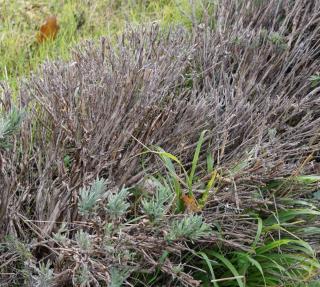
There are two ways to rejuvenate old, woody lavender:
A different strategy is to start a new plant from the old one, through:
Let’s take a look at each of these techniques!
The goal is to cause your lavender to send out new shoots from the base.
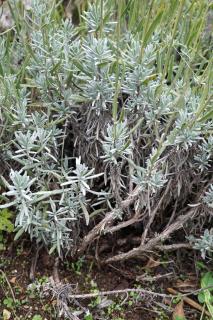
⚠️ Sap must still circulate ⚠️
🌿 ✔️ ❌
Important: there should still be active, leafy branches to ensure sap circulation. Buds and shoots can only sprout along stems that have leaves at their tips.
A note about patience: all methods for rejuvenating lavender require time. Your lavender will look like a work in progress for 3-4 years. It won’t look nice but it’ll be fun to see it grow!
A grown plant has a strong, established root system, and careful pruning maximizes this advantage.
For each technique below, the first step is always a basic trimming back.
Grab a handful of branches and shorten them with sharp shears, then move on to the next handful. Stay in the “green leaf” zone: keep at least 3 in (8 cm) of leaves on live branches.
Over a few years, typically three or four, you can reduce the size of your lavender shrub. Since pruning all at once would kill the plant, spreading the pruning over several years is what makes it work.
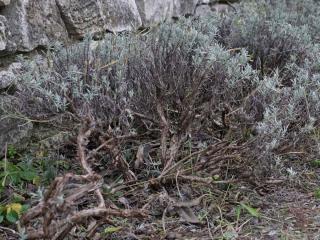 This isn’t always successful.
This isn’t always successful.The idea is to group long branches into three or four batches.
New sprouts will appear near the base, which you nurture until they replace the last of the older stems in year 3 (or 4).
Layering is when you bury a portion of a stem under soil. Roots develop within a year. The layered stem can be cut out from the mother plant after one or two years, and replanted.
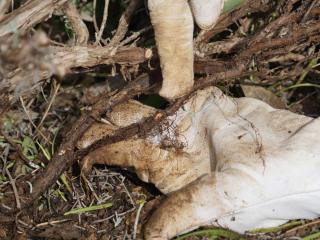
A variation of the layering method is to bury the trunk and main branches of the old lavender plant with potting mix. This is easy if the center is already bare with long branches falling over to every side.
With these techniques, you’ve got a reasonable chance of saving your doomed, woody lavender.
If you’re curious, below is a short overview explaining why lavender doesn’t grow back from old wood.
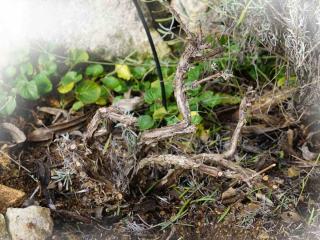
This means you shouldn’t cut lavender back too short, since it can’t grow back.
The one in the picture above/right died the next season. It might have survived with careful watering, but chances were low.
Cutting back the entire plant all the way to the woody part is too much of a shock for the plant. Why so? It’s the result of evolution and adaptation!
Lavender stems are very specialized.
This drought specialization came at the cost of propagation. Buds on old wood cannot sprout through the bark to turn into leaves and new stems.
Lavender is armed against grazing. thanks to its strong-tasting essential lavender oil.
Animals like deer and rabbits hate eating lavender leaves and stems of the plant.
Since it successfully repels foraging animals, lavender doesn’t need to grow back from the stump.
Instead of replacing your lavender with a new, store-bought lavender, you can propagate your existing lavender.
Cuttings – this is how professionals multiply lavender.
Seeds – Some lavender varieties also go to seed.
Most hybrids are sterile, like lavandin:
Read also:
Keep pruned woody stems and wrap other herbs around it to make a special “Mediterranean bouquet garni” for cooking!
Image credits: Rosalyn & Gaspard Lorthiois, own work